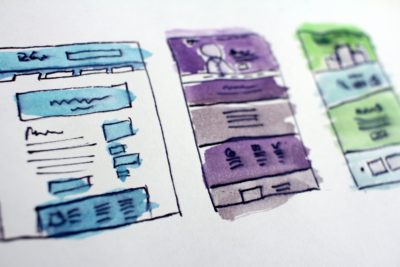New product development stages 101
Are you developing a new product or service to help the net zero revolution? An unprecedented crisis needs unprecedented innovation. There’s never been a more important time for businesses to come forward with innovative products and services.
What is product development and why should you do it?
From a new idea to market release, product development describes the stages involved in bringing a new or improved product to life. It applies to both products and services, and can also include enhancing existing ones.
Successful product development benefits your customers and business in the following ways:
Growth
New products and services are a key source of sustainable business growth. Product development will help your business remain relevant and competitive as markets evolve.
Climate change
With an urgent need to reimagine how we use the earth’s resources, we need to embed low carbon and low waste into products and services across every sector of the economy.
Customer value
Customer needs aren’t static. They evolve over time. Product development ensures that you‘re able to continue providing them with value. Paying attention to customer needs can help generate innovative ideas for product development.
New product development stages
The steps to taking a product to market can vary based on the nature of the business and the management style. Most businesses, however, follow seven main stages.
-
Idea generation
It all starts with an idea. Ideas can come from within your company or from outside. Customers, employees, competitors, distributors, and suppliers can all be sources. Be creative with this step and come up with raw and unproven ideas, knowing they’ll be sifted through later.
-
Idea screening
Idea screening filters ideas to help pick out the good ones. Team-wide discussion will help narrow your pool of ideas down. Consider using a SWOT analysis (Strengths, Weaknesses, Opportunities, and Threats) when shortlisting ideas.
-
Concept development and testing
Concept development helps you specify who the product is for and the problems it will solve. This is a chance to establish the customer benefits, its feasibility, and potential return on investment. It’s also useful to list hurdles you may meet and ways to overcome them.
Concept testing is market research that tests how your idea will land with your target customer. You could use a survey, and present your audience with more than one idea to see which is most popular.
Feedback is crucial to help understand customer needs. Zoom, the teleconferencing platform that has become so popular it’s now part of our vocab, focuses its product strategy on customers’ needs. The company carefully listens to product feedback to maximise the success of its product development.
-
Marketing strategy
Your new product has to be marketable. Focusing on the technology and neglecting the marketing side rarely ends well. When creating a strategy, consider:
- Competitors
- Target audience
- Market challenges
- Marketing channels
- How it aligns with your business strategy
-
Business analysis
As well as a marketing strategy, the business case needs to stack up. Review sales, costs, and profit projections for the product. Estimate sales by looking at the sales history of similar projects, or by conducting market research. If these factors pass muster, then the product can move to the next stage, product development.
-
Product development
In this stage, you design a functional prototype. Typically, an R&D team will test the prototype to see how it performs. You won’t necessarily have access to the equipment, facilities, or expertise to test your product. That’s where a university collaboration can come in, such as our Innovation Accelerator.
-
Test marketing / product testing
The last stage before commercialisation begins is test marketing. This stage involves product testing the prototype in realistic market settings. Test marketing allows you to test your marketing plan (positioning, advertising, packaging etc.) before you commit to investing further and launching the product.
-
Commercialisation
Finally, you’re ready to take your product to market. Unleash your marketing strategy, making sure it answers questions such as:
- When and where will you launch your product?
- Who will you launch your product to?
- What tactics and channels will you use?
Support for product development
At Clean Growth UK, we help businesses at any point on their innovation journey. Our offer is designed to cover each of the new product development stages.
Innovation Accelerator helps you design, develop, and refine green products, services, and business processes. Based across three universities, we connect businesses with academic expertise, labs, facilities, and equipment to help get their products to market faster.
Our Clean Growth Fast Track programme takes care of the commercial side. It provides tailored support and 1-2-1 coaching and covers IP and copyright, marketing, partnership development, investment readiness, access to grant funding, and sales strategies.
Photo by Hal Gatewood on Unsplash
